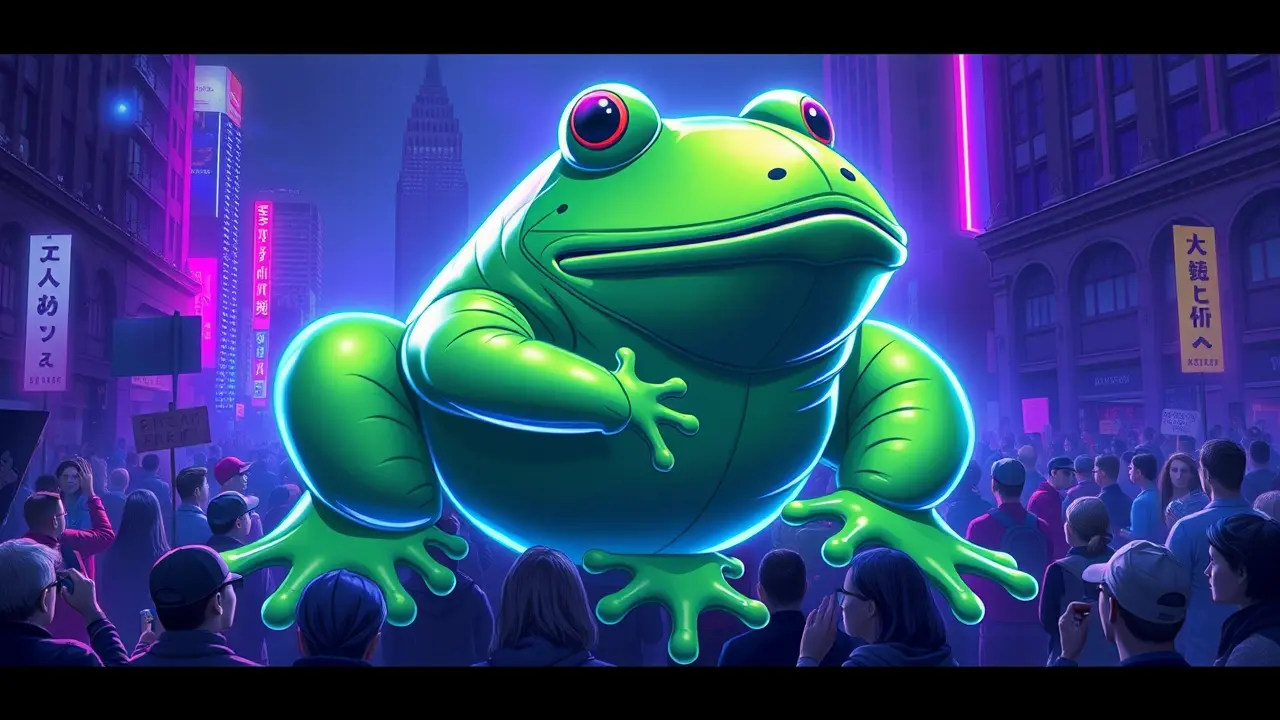The Long History of Frogs as Protest Symbols
The sudden, startling scarcity of inflatable frog costumes across online marketplaces and costume shops is not a whimsical fashion trend but the latest flashpoint in a long and potent history of amphibian symbolism within protest movements, a development that speaks volumes about the current state of American political dissent following the recent 'No Kings' rallies and in direct opposition to the broader demonization of US cities by figures like Donald Trump. To understand the power of this seemingly absurd image—a person encased in a giant, bobbing, green frog—one must look beyond the immediate headlines and into the murky waters of internet subcultures and historical resistance.The frog, specifically the 'Pepe the Frog' meme, was once a neutral, almost nihilistic icon of early internet culture, a simple cartoon character created by artist Matt Furie. Its co-opting by the alt-right during the 2016 election cycle, a process Furie fought tirelessly against, transformed it into a symbol of hate, a development that mirrors how other symbols can be twisted to serve divisive agendas.Yet, in a stunning act of reclamation, protestors are now seizing this symbol back, draining it of its malevolent power and inflating it into a literal and figurative buffer against authoritarian rhetoric. The frog's new incarnation is one of peaceful, almost absurdist defiance; it is difficult to frame a city overrun by giant, comical frogs as a 'lawless hellscape,' and that is precisely the point.This tactic has deep roots. From the clowns and jesters of medieval courts who could speak truth to power through humor, to the Yippies of the 1960s who nominated a pig for president, to the Anonymous movement with its Guy Fawkes masks, absurdity has long been a weapon against oppressive seriousness.The inflatable frog costume, cumbersome and ridiculous, creates a physical and psychological barrier, de-escalating tension while simultaneously refusing to engage on the terms set by demagogues. It is a form of what sociologists call 'cultural jamming,' interrupting the expected narrative of violent protest with one of surreal non-compliance.The sell-out phenomenon indicates a highly organized, rapid-response mobilization, leveraging e-commerce platforms to outfit a decentralized resistance. Experts in social movements see this as a hallmark of 21st-century activism, where digital coordination meets tangible street-level action.The consequences are multifaceted: while it effectively counters a specific political narrative and provides a safer form of protest, it also risks being dismissed as frivolous by those who fail to grasp the sophisticated communication at play. The frog, therefore, is more than a costume; it is a floating, green testament to the evolving language of protest, a symbol that has been to the darkest corners of the internet and back, now reborn as a resilient, if bizarre, guardian of civic space against the tides of demonization and division, proving that sometimes, the most powerful response to fear is not a roar, but a ribbit.
TI
TiredOptimist8 hours ago
wow using giant frog costumes to fight hate is actually kinda brilliant tbh, wish more protests were this creative smh
0
SK
SkepticalObserver8 hours ago
tbh i never thought i'd see a frog costume as a political statement smh but i guess it makes a weird kind of sense
0
CO
CosmicNomad11 hours ago
wow this feels like the first ripple of a much larger wave, a truly beautiful reclamation of narrative from the shadows. it’s poetic how a simple, absurd costume can become a shield for the soul of our cities, bending the arc of our story back towards hope and light
0
© 2025 Outpoll Service LTD. All rights reserved.
